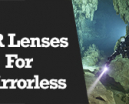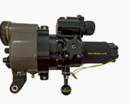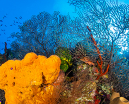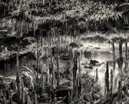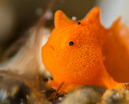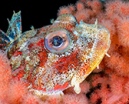Articles

Sea of Glass: The fluid dynamics of stop motion
Sean Vicary has posted a unique stop motion film shot around the coast of West Wales, UK onto Vimeo. The filmmaker describes the film as being:
“Organic remnants (that) are manipulated and juxtaposed with music and photography in order to investigate the liminal space between land and sea.”
Although not an underwater film, Sea of Glass uses marine elements in stop motion to achieve a very interesting effect.

Gates offers additional external monitor options
Gates Underwater Products has expanded the number of housings that can be fitted with it’s EM43 external monitor. They released a version for the Aquatica Canon 5D MkII last September and can now fit it to Seacam and Subal housings as well.
Unlike the Aquatica, both of these need to be fitted at the Gates factory, rather than being fitted by the user.
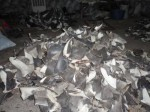
Fijian government proposes ban on shark finning
Radio Fiji has reported that Fiji is set to enact a fisheries policy which will ban all shark finning in the country in order to address the alarming decline of sharks. Department of Fisheries and Forests permanent secretary Commander Viliame Naupoto said that the ban would be similar to laws already enacted that currently protect turtles. The new law would ban the trade of all shark fins and other products derived from any type of shark captured in Fijian waters.
The Fijian government has recognized that sharks have more value in attracting tourism than they do as foodstuffs and their vital role in the ocean’s ecosystem.

Ocean Leisure launches Ocean Leisure Cameras
Deepshots reports that Ocean Leisure has announced that it will be opening an imaging specific showroom at it’s Northumberland street store on the Embankment. The same premises has, for the past six years, been run by Cameras Underwater and the sales team will remain largely unchanged.
Ocean Leisure Cameras will start trading on 18 July.

Review: Light and Motion SOLA 600 and iTorch Pro 3 focus lights
Light and Motion released their popular SOLA 600 focus light in 2010, and many reviewers found that the red light mode on it significantly aided autofocus performance, whilst at the same time reducing subject’s reaction to the light. Since Alex Mustard’s review, Light and Motion have added additional features to the torch, and iTorch has released their Pro 3 focus/video light, which also has a red LED setting.
Wetpixel set out to test the two torches side-by-side both in the field and on the surface. The following review is based on using and diving both units for several months.

Final call for photo entries: Cairns Underwater Film Festival
The Cairns Underwater Film Festival Underwater Photography Competition is making a final call for entries before the closing date of 20 July.
Entries are in six categories: Wide Angle Nature, Macro, Diver/s, Creative, Compact and Young Photographer as well as “Best of Show”. The winners will be announced at the Cairns Underwater Film Festival in Cairns, Australia on 13 August and the winning images from the photo competition will be screened alongside local underwater filmmakers and films from the World Underwater Film Festival held in France.

DiveFilm HD podcast: Grouper Moon Project
DiveFilm HD Video has just released “Grouper Moon Project - Protecting a Caribbean Icon” as its latest podcast on iTunes. Featuring footage of magnificent Nassau grouper spawning aggregations off of the Cayman Islands, this video stresses the vital need to protect those remaining for the future of this apex predator. REEF is involved in a collaborative program with the Cayman Islands Department of the Environment studying Nassau grouper (Epinephelus striatus), which are a social and ecological corner-stone of Caribbean’s coral reefs.
Divefilm HD podcasts are produced in association with Wetpixel and are available as free downloads on iTunes.

Pygmy seahorse code of conduct released
Dr. Richard Smith has published a recommended code of conduct to be followed when interacting with Pygmy seahorses. Richard’s PhD thesis was about the gorgonian dwelling Denise (Hippocampus denise) and Bargibant pygmy seahorses (Hippocampus bargibanti) so his guidelines are based on hundreds of hours of observing the creatures and also watching the interactions between seahorses and humans. The idea behind the code is that it will be something that can be:
“printed, emailed and talked about as much as possible.”
It is available as a printable, illustrated pdf download from Richard”s website. (Images ©Richard Smith.)
